Sustainability
At Paul Green, we think and act on a comprehensive basis. We focus not only on the shoe itself, but on our responsibility for the environment and for society as well.
Our way to increase sustainability
Our sustainable DNA shows through in everything we do – from the materials we choose to our packaging. Our mission is to become a little more sustainable each day, creating a symbiosis between our shoes and our environment.
Materials
Sustainable materials for high-quality shoes
Quality & Durability
When choosing the materials for our shoes, we place particular importance on quality, durability, and good manufacturing processes. We focus on both short procurement chains and eco-friendly production processes.
There are many ways to show respect: with words, gestures, and even with shoes
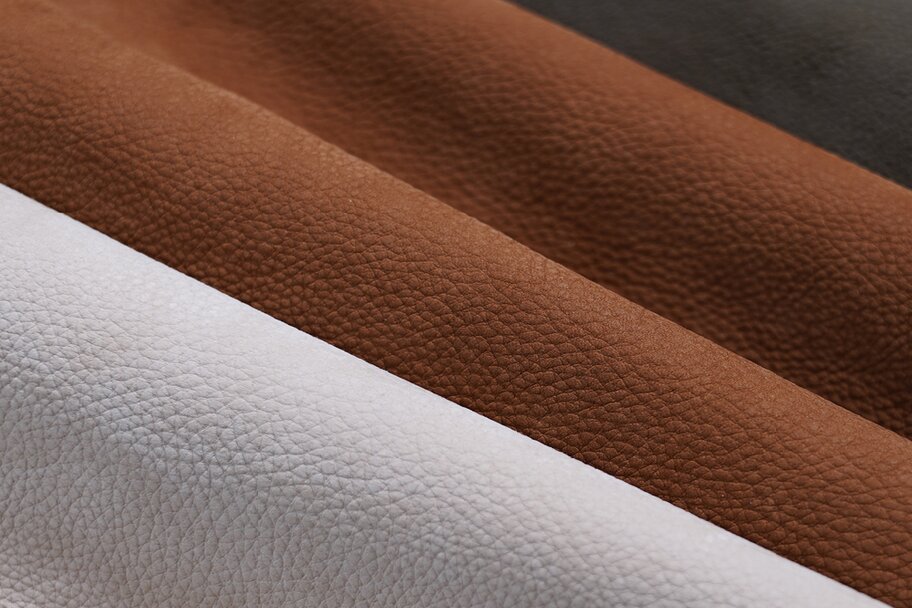
Leather
As a natural product, leather has many positive properties. It is breathable and flexible, which is why shoes made of leather are so comfortable. Leather’s unique durability and robustness make it a highly sustainable material, particularly in direct comparison with synthetic materials.
We carefully examine the origins of the leather we work with. 90 percent of our leather already comes from LWG-certified tanneries. Every six months, our leather is tested for chemical substances by the independent Prüf- und Forschungsinstitut PFI (Test and Research Institute Pirmasens) to ensure that our products contain no hazardous chemicals. In addition to our certifications, the tanning process is an important parameter of our sourcing process. We are working continuously to increase the percentage of alternative materials we use, such as vegetable-tanned leathers. This percentage is subject to seasonal fluctuations, based on stylistic considerations.

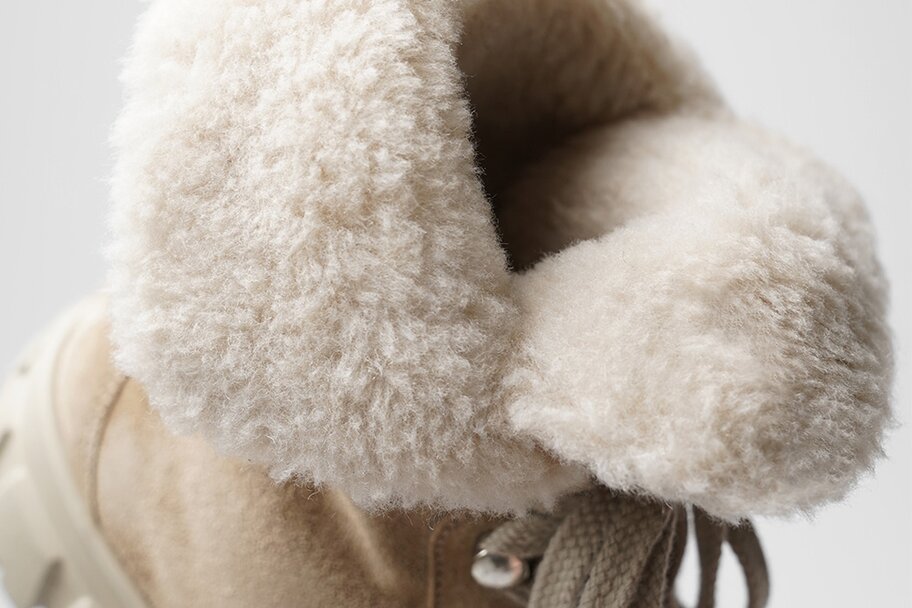
Merino wool
Merino wool is a sustainable alternative to synthetic lining materials. It also feels comfortable against the skin, is odor-resistant, highly breathable, and antibacterial. Thanks to its temperature-regulating properties, this natural fiber is cool in the summer and warm in the winter. Small air chambers between the crimped wool fibers make merino wool insulating, and help it transport moisture. This makes it an ideal, warm liner for our winter styles.
Our warm merino lining is made of 100 percent shorn, non-mulesed wool from certified Portuguese farms. It is also undyed and natural.
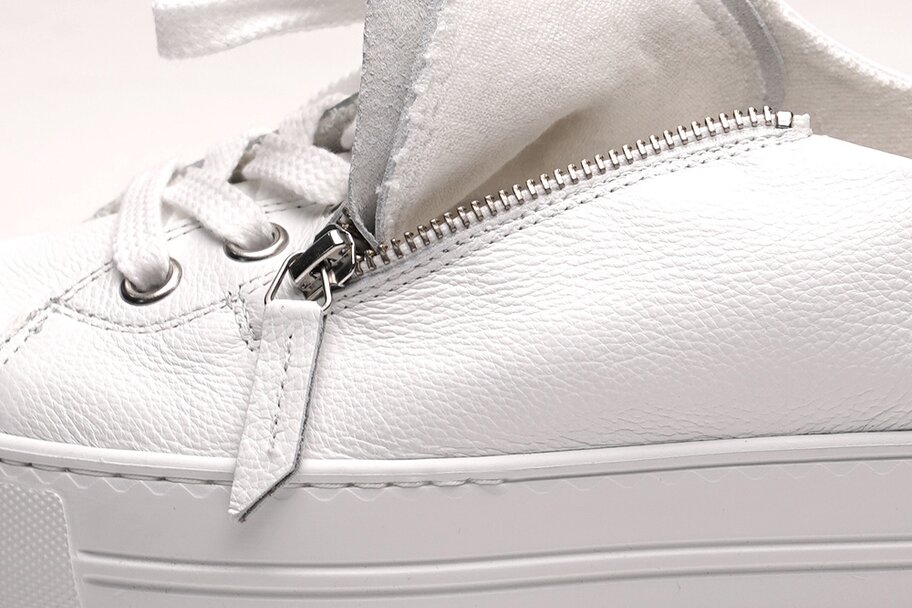
TencelTM
TENCEL™ is extremely soft and gentle on the skin. The material is also lightweight, breathable, and quick drying.
The raw material for TENCEL™ is produced using cellulose fibers from eucalyptus trees. The production process is resource-saving and eco-friendly. During the process, eucalyptus pulp is soaked, then the cellulose kernels are removed from the plant fibers using non-toxic solvents and spun into fabric. The fabrics are compostable and biodegradable. This means they can be returned fully to nature. Currently, the percentage of Tencel we use in our designs with terry lining is over 50%.
A question of respect – we never use real fur or leather from endangered species.
At Paul Green, we know that the environment is influenced by the decisions we make. Because of this, we only use ethical materials in our shoes. We never process real fur, or leather from endangered species. Instead, we use printed and embossed leather to achieve the look of exotic leathers. We only use shearling, merino, and sheep wool from non-mulesing farms, faux fur made of synthetic fibers, and vegan liner materials for the warm, lined designs in our collections. By doing so, our goal is to ensure that our products meet the needs of our customers and our environmental standards.
We care:
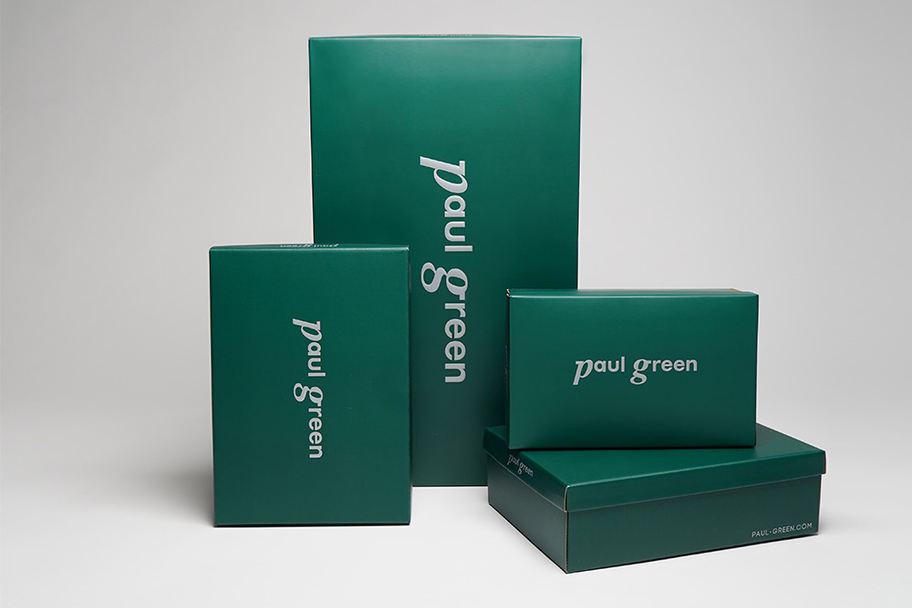
The Green Box
Non-polluting packaging
We know that packing of any kind is not eco-friendly. Nevertheless, packaging is essential to transport our products to their destination unharmed. We are working continuously to minimize the environmental impact of our packaging and to keep that impact as low as possible. Because of this, we only use FSC-certified paper for our packaging. All of the cardboard and paper we use comes from PEFC-certified suppliers and is printed using water-soluble ink. That means our boxes are already 100% recyclable.
Respect for nature & the environment
Comprehensive testing: Our certificates
Before a shoe leaves our factory, it is carefully checked for the quality of its finish and its impact on the environment. We work with external testing institutions to confirm that our shoes meet the highest standards for sustainability and quality. That’s how we guarantee our customers that they can trust in their shoes – knowing they’ll take them wherever their paths lead.
Leather Working Group (LWG)
Since December 2023, we have been a member of the Leather Working Group (LWG), a multi-stakeholder organization committed to reviewing and improving environmental standards in the leather industry. Our LWG membership affirms our commitment to transparent and sustainable practices.
At Paul Green, 90% of the leather we use is sourced from LWG-certified tanneries. Our medium-term goal is to increase our usage of LWG-certified leather.
PFI Eco Label
The chemical, physical, biotechnological, and microbiological properties of the materials we use are tested by the institute that awards the PFI Eco Label. In addition, the label requires compliance with environmental policies in our supply chains and waste management, along with occupational safety and social standards. The label is awarded by the Prüf- und Forschungsinstitut Pirmasens (PFI – the Test and Research Institute Pirmasens), which is the leading independent testing institution for the shoe industry.
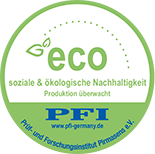
We can do it!
Our path to more sustainability
Shoes made in Europe
The Paul Green brand stands for holistic thinking and action. We have a production sites in Croatia, with contract manufacturers Southern Europe. We have specifically chosen to build a supply chain that protects the environment and reduces our consumption of resources. Short transportation distances and transparency with respect to our suppliers are just two reasons why we believe we are choosing the right path.
Sustainable and high-quality production
When manufacturing our shoes, we focus specifically on the selection and composition of individual components. Because of this, we purchase 90% of our materials from Europe. Our goal is to continue increasing this percentage.
We are aware that manufacturing shoes always has an impact on the environment. Because of this, we are working continuously to minimize our ecological footprint and keep it as small as possible.
On-demand production
Our path to more sustainability? On-demand production!
Overproduction is one of the biggest issues in the fashion industry. It is a massive problem for the environment and the climate, and results in huge amounts of CO2 emissions and wasted resources. Because of this, at Paul Green we are making a conscious choice against overproduction, and don’t produce our shoes until they are ordered.
We purchase 90% of our materials from Europe
Materials purchased from Europe:
- 50% Italy
- 13% Austria
- 9% Romania
- 8% Germany
- 6% Turkey
- 4% Bosnia, Croatia, Czech Republic, Spain
Materials purchased from third countries:
- 5% India
- 3% Pakistan
- 1% Morocco & China
Responsibility
Paul Green - a company with many faces
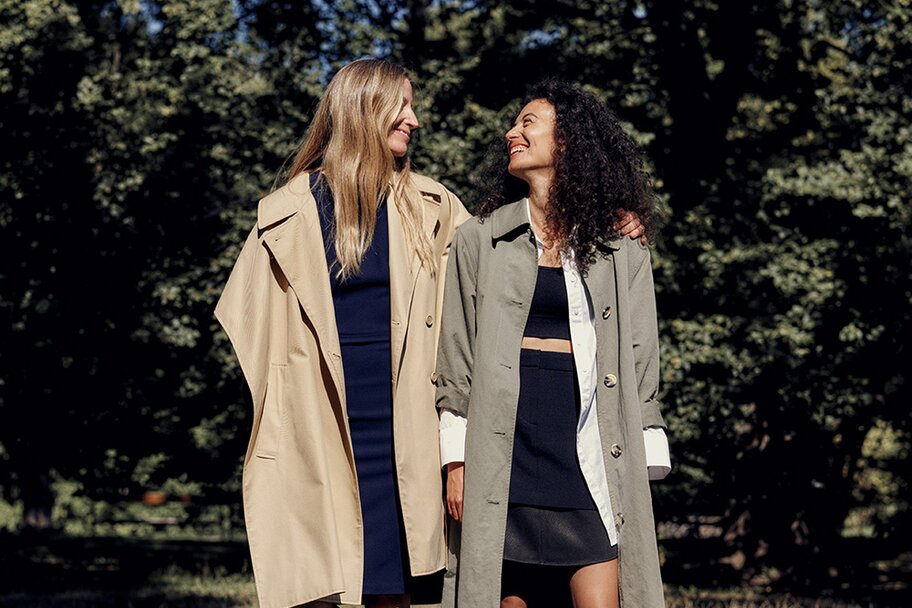
Diversity
Showing respect and supporting one another are a big part of our success. Different viewpoints and approaches enrich our corporate culture with a long-lasting effect. Our employees come from 14 countries, and our workforce is 75% female and 25% male. 25% of our management team are women.
Employee loyalty is just as important as the diversity of our workforce. Currently, over 80% of our employees at our Austrian location have been with us for more than 10 years, and 50% have been with us for over 20 years. 50% of our employees at our international locations have also worked with Paul Green for more than 5 years. This deep foundation of long-term experience is reflected in the quality and comfort of our shoes.
A female company
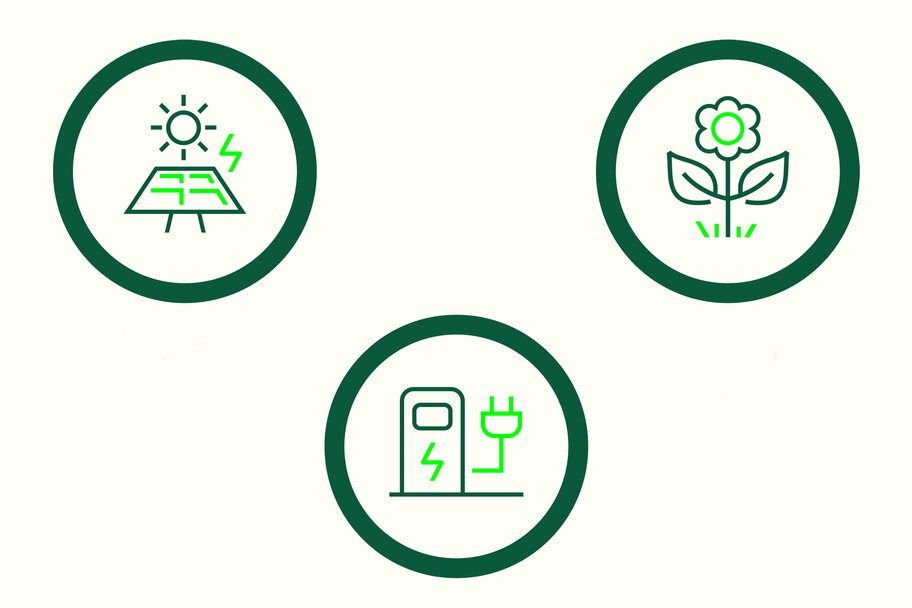
Green headquarters
Sustainability requires holistic thinking. Because of this, we have designed our headquarters to be energy-efficient and resource-saving. A 500 kWp photovoltaic system on the flat, green roof of our headquarters in Austria allows us to produce around 400,000 kWh of clean power. With an efficiency of 140%, we are able to meet all of the site’s energy needs with solar power.
A 1,000 m² wildflower meadow in the company grounds helps protect biodiversity and provides a space for our employees to spend their breaks outdoors. We are also working consistently to convert our company vehicle fleet to electric vehicles.